Customer Testimonials
- HOME
- Customer Testimonials
- Renewable Energy Systems
Renewable Energy Systems
Kitashiba develops, manufactures, and sells power transformers, electric generators, and other social infrastructure systems for industrial power generation facilities and utility power companies. Kitashiba, the only heavy electric machinery manufacturer headquartered in the Tohoku region, is committed to offering total solutions. Looking ahead into the next century with customers, Kitashiba proposes the optimal combination of new and existing systems based on the latest information, considering the overall situation of each customer.
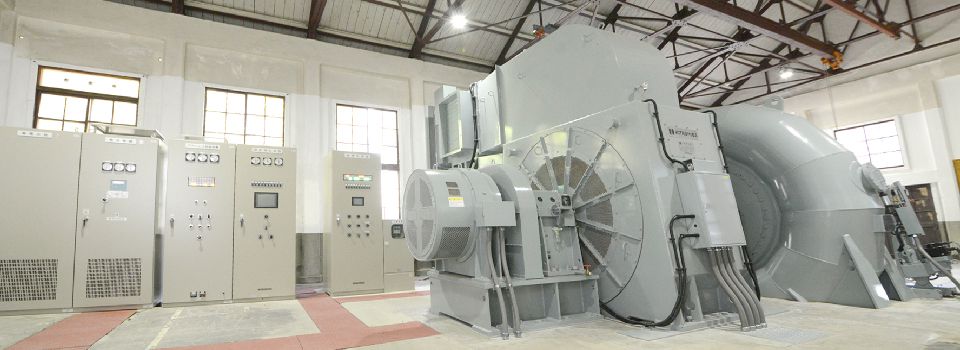
Manufacturing, installing, and commissioning a suite of systems to retrofit a small hydroelectric power plant
The First Choshi Power Station of DOWA Holdings, Co. Ltd. is located up the Ooyugawa River in the northeastern part of the Akita Prefecture. This power station was constructed in 1897 to supply electricity to the Kosaka Mine, a metal mine. Back in the 1890s, electricity was widely used for lighting in the Tohoku region. However, the use of electricity in industry was unheard of in Tohoku at that time. The First Choshi Power Station was a pioneering project in Japan; the Kosaka Mine was the second mine to use electricity, following the Ashio Copper Mine.
The replacement project for the Kosaka Mine was planned after a periodic insulation diagnosis had found that the rotator windings were approaching the end of their useful life. Hydroelectric power plants generate clean energy. Kitashiba received a contract for manufacturing, installing, and commissioning a suite of systems for the replacement project of the First Choshi Power Station. Working in tandem with the First Choshi Power Station, Kitashiba successfully completed the project, and DOWA Holdings is satisfied with the power plant that has become maintenance-free and provides an increased output.
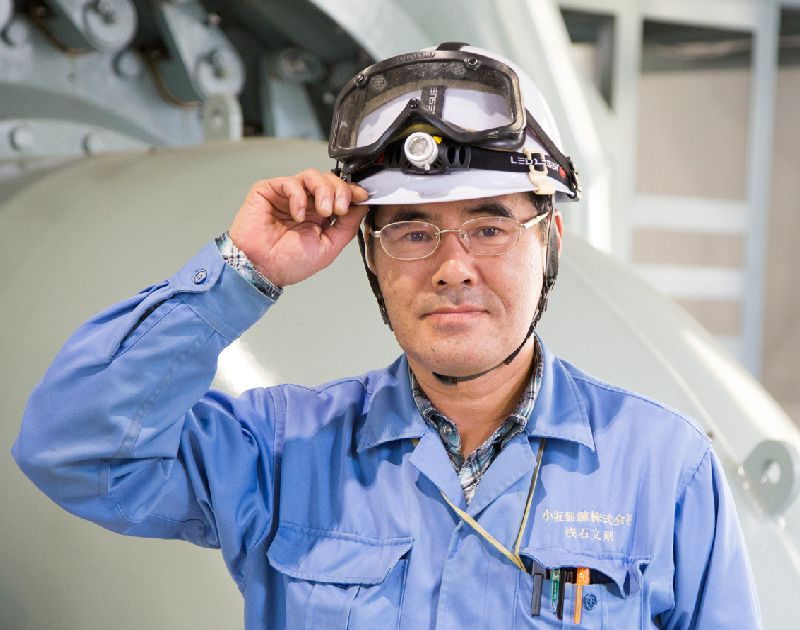
Mr. Fuminori Asaishi, an engineer at the Akita office of DOWA Holdings
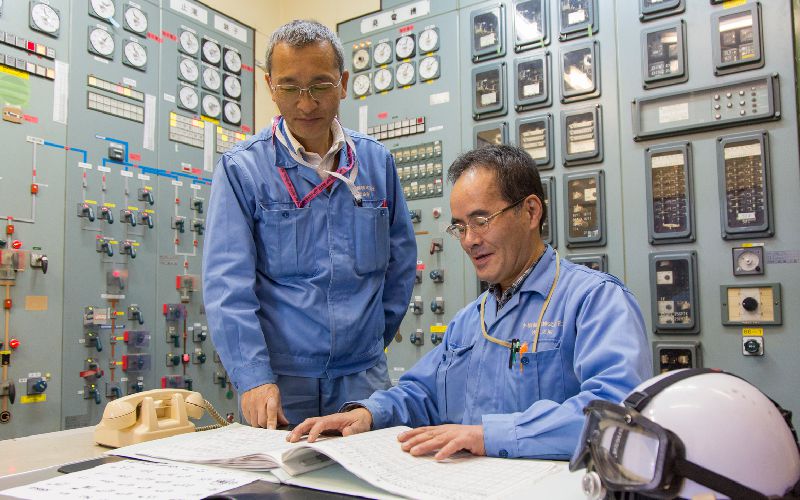
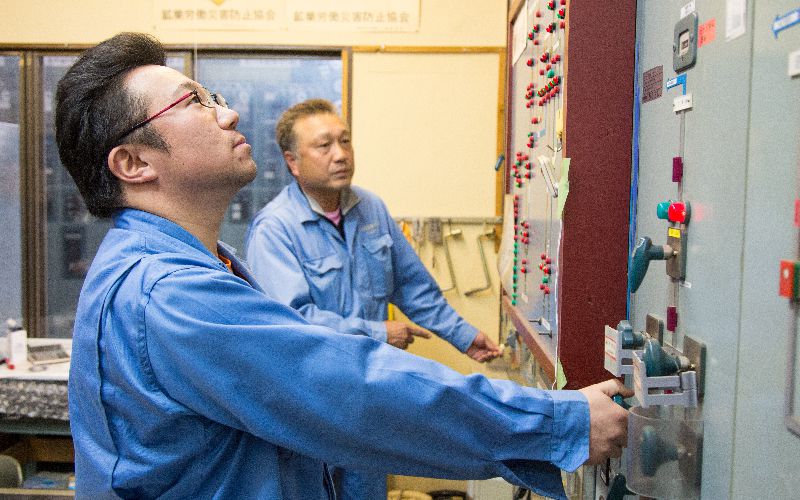
Epoch-Making Retrofitting Plan for Increasing Power Output by Roughly 8%
When DOWA Holdings started considering the replacement project for the First Choshi Power Station in 2011, a feed-in tariff (FIT) scheme for renewable energy was shortly to be enacted in Japan. Kitashiba developed two proposals, considering it would be in the best interest of DOWA Holdings to totally replace existing facilities, taking advantage of the FIT scheme that was to begin the following year.One plan was to replace only the aging rotor windings to maintain the current power output whereas the other plan was to replace all the systems and equipment to improve power efficiency.A comparison of two plans revealed that the latter plan would increase the power output by roughly 8%.Mr. Fuminori Asaishi, an engineer at the Akita office of DOWA Holdings, says he thought, “Why didn’t I think of that?” when he read our proposal. p After a great deal of consideration, DOWA Holdings decided to undertake the replacement project in 2015.We had 13 months to prepare for the commencement of the project.In the meantime, Kitashiba kept DOWA Holdings up-to-date and provided it with technical support.

First Choshi Power Station in Akita Prefecture
Completed in Six Months As Scheduled
Following an examination and approval by the Ministry of Land, Infrastructure, Transport and Tourism (MLIT), the replacement project for the First Choshi Power Station began in June 2016. The major focuses of the project were: 1. increasing the capacity of the generator stator to match the output of the water turbine and reducing the size of the water turbine; 2 replacing the generator control board; 3. installing a rapeseed oil-filled transformer; and 4. replacing the storage battery, rectifier, automatic voltage regulator (AVR), speed regulator, and watt-hour meter boards. Our objectives were to 1) improve the efficiency, 2) reduce the size, 3) eliminate the need for maintenance and increase the service life, and 4) reduce power loss of the generator. Obviously, during the replacement project, the power plant would be shut down, and no electricity would be available for the power receiver. It was therefore necessary to purchase electricity until the project was completed. A risk would have arisen if the project had been prolonged.
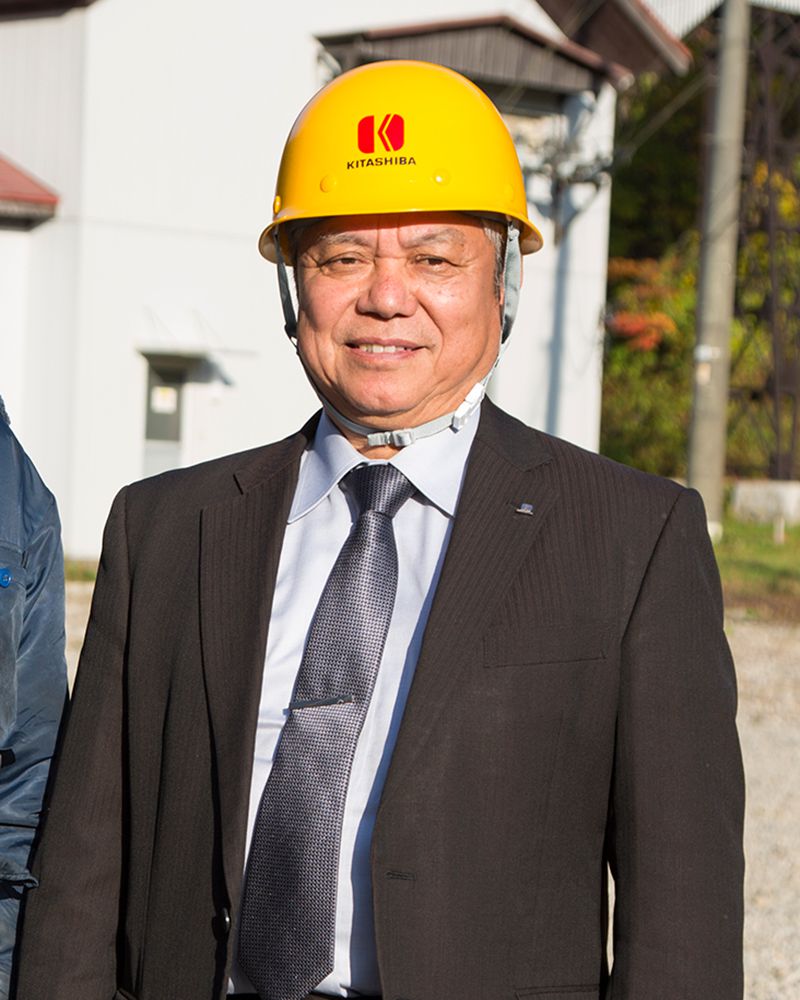
Shinichiro Watanabe
Tohoku Sales Group, Power Systems Tohoku Sales Department, Power Systems Division of Kitashiba Electric Co., Ltd.

This project was full-scale construction work that would have normally required nearly one year to be completed. A long delay would have posed a risk. Mr. Asaishi says, “On the contrary, the project was completed in six months as scheduled. In addition, the power output of the generator has increased by roughly 8% as planned. The new generator is also oil-less and maintenance-free. This project offered many benefits for us. I am truly grateful.” Nearly one year has passed since the completion of the project. Due to the increased efficiency and the enactment of the FIT scheme, DOWA Holdings has gained benefits from the project with a positive return on investment.
Rare 60-Hz Generator in Tohoku Serving as Backup Power Supply
Eastern Japan runs at 50 Hz whereas Western Japan runs at 60 Hz. Although the First Choshi Power Station is located in eastern Japan, it has an isolated 60-Hz transmission line. Mr. Asaishi said, “This originates from the purchase of a generator from General Motors Company when the power plant was constructed in 1897, which runs at 60 Hz. We have been using it because it is efficient.” The First Choshi Power Station delivers electricity to Kosaka Smelting & Refining Co., Ltd. and converts surplus electricity to 50 Hz.
Following the Great East Japan Earthquake, the Akita Prefecture was without electricity for a few days. Mr. Asaishi said, “Since the 50-Hz mains power was cut off, we operated the 60-Hz generator on its own to supply electricity so that Kosaka could light up the factory, maintain the quality of wastewater (so as to prevent environmental pollution), and safely shut down the factory. The 60-Hz electricity supply has been used as a backup since early times.” Mr. Asaishi said that the First Choshi Power Station has experienced few troubles in isolated power transmission since 1897.
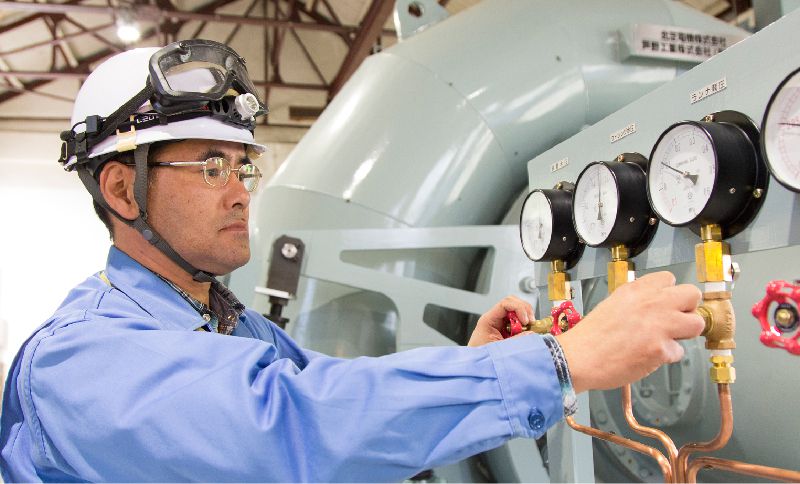
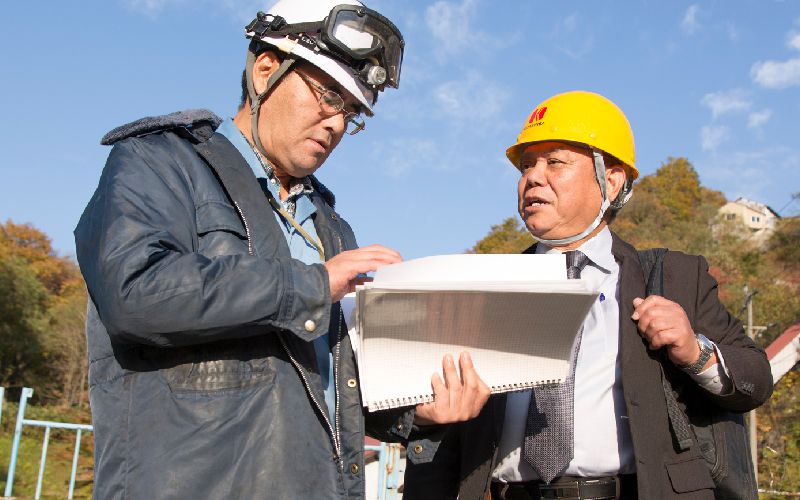

Personnel at the First Choshi Power Station
Environmentally Friendly Rapeseed Oil-Filled Transformer
This project is characterized by the use of ULTrans, Kitashiba’s new environmentally friendly transformer. Mr. Asaishi said, “DOWA Group is committed to the environment and the realization of a recycling-based society. I believe both personally and professionally that it was a good choice to select a transformer that uses rapeseed oil as insulating oil. The previous transformer was immersed in mineral oil. Since the new transformer uses environmentally friendly vegetable oil, it does not cause soil pollution in the event of a leak or spill. I am happy to be able to contribute to the environment.” Not only the employees of DOWA Holdings but also people in a wider community have visited the First Choshi Power Station to learn about rapeseed oil-filled transformers. Some people came all the way from Kansai. Everyone is surprised to know that ULTrans contains rapeseed oil. “Kitashiba’s proposals help me gain broader perspectives. The new environmentally friendly transformer is no exception. ‘What do you say to this product?’ ‘You can make it safer this way.’ ‘You can use this to improve efficiency.’ Kitashiba offers many helpful suggestions. I am more than grateful that Kitashiba responds promptly when we are in trouble. We are counting on Kitashiba,” said Mr. Asaishi. We at Kitashiba also look forward to working with DOWA Holdings to open the way to the future.

